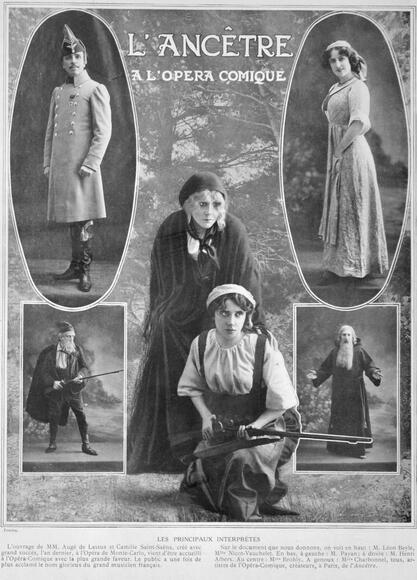L'Ancêtre

Drame lyrique in three acts premiered at the Théâtre de Monte-Carlo. Dedicated to Prince Albert I of Monaco.
“No,” shouts Nunciata, the Corsican ancestor, in the first act of this drame lyrique, as she stubbornly refuses to put an end to the vendetta between her family, the Fabianis, and that of their enemies, the Pietra-Neras. Built against a backdrop of tragic deaths, thirst for revenge and passionate love, the work features seven main characters, three of whom govern the plot, act after act. In Act I, the hermit Raphaël (baritone), supported by Margarita (soprano) and Vanina (alto), Nunciata’s two daughters, expresses his wish to see the rivalry between the two families die down. In Act II, Nunciata (soprano) learns of the death of her son Leandri and enjoins her daughter Vanina to avenge her brother by killing his assassin, Tébaldo Pietra-Nera (tenor). In Act III, Vanina cannot bring herself to kill Tébaldo, whom she loves unrequitedly – he is Margarita’s lover – and dies from a bullet that Nunciata intended for the young man. The dark, dramatic plot of Augé de Lassus’ libretto is balanced by musical numbers imbued with gentleness and tenderness, such as the love duet between Margarita and Tébaldo in Act I. After its acclaimed premiere at the Monte-Carlo Theatre in February 1906, L’Ancêtre was performed there four more times, and then in several cities in France, Belgium, Switzerland and Germany, as well as in Algiers (February 1911), and Cairo (February 1912), before two further performances in March 1915 on the stage where it was first given. It was not until 2019 that the drame lyrique was revived, at Munich’s August Everding Theaterakademie.

